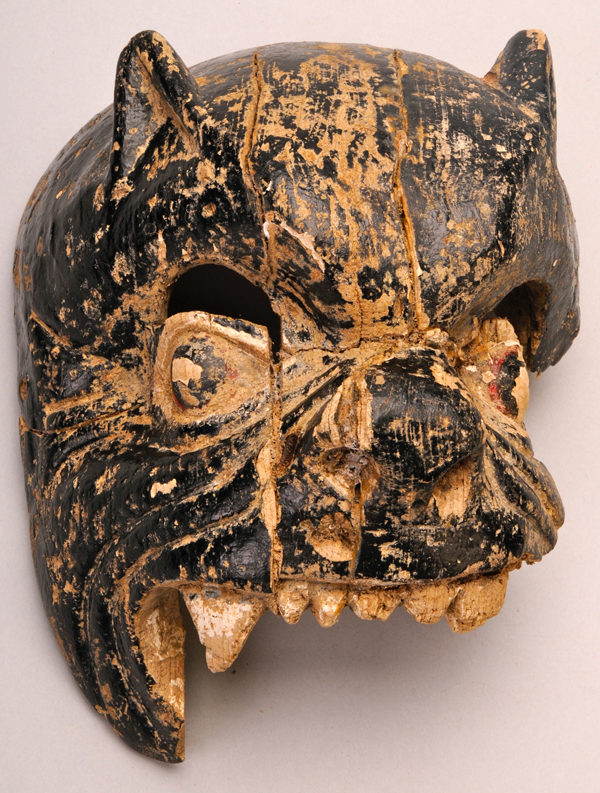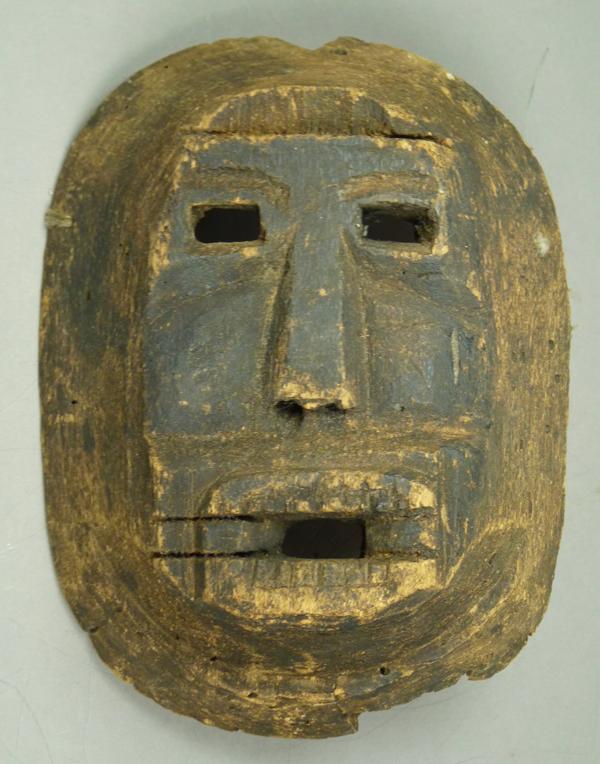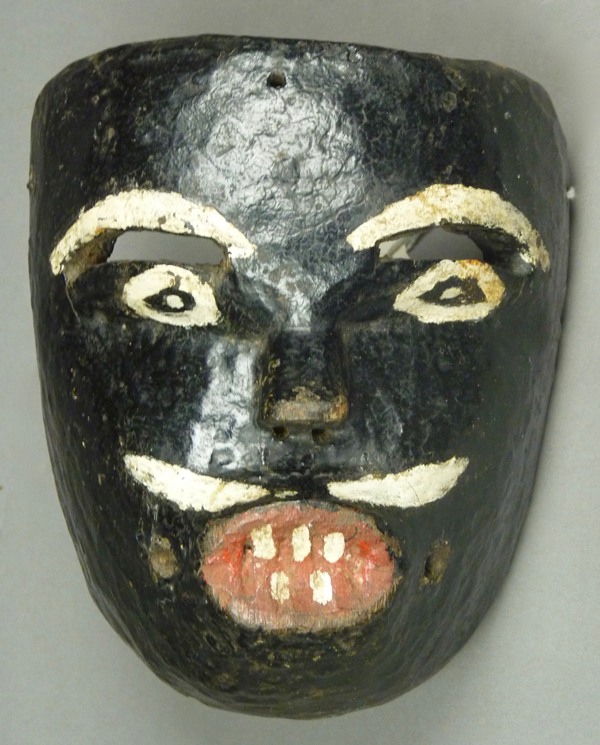Last week some of us waited together to see some new arrivals from a Texas collection that had originally been gathered in the 1950s and later. We examined seven masks from the Sierra de Juárez that had earlier been in the collection of Rex and Dolly Marcum, who lived in San Gabriel Etla, Oaxaca and are now long deceased. I have other masks in my collection that were obtained later from their estate.
Today we will examine an eighth mask from the Texas collection. This one is clearly not in the style of the Sierra de Jauréz and is not from the Marcum collection. It was obtained from a female dealer in the city of Oaxaca, probably in the late 1970s or early 1980s; the seller recalls simply that this dealer’s name was Schöndube, and I am assuming that she was a dealer in Mexican folk arts such as textiles, pottery and masks. The Cleavers have vague recollections of visiting Schöndube’s shop in the 1970s. This is of course an unusual name to encounter in Mexico, and a search yielded only a few individuals with that name.
Fortunately, the little that was discovered seemed sufficient to shed some light on this dealer and her family. First I located a print for sale on the Etsy™ site that was labeled as the work of “C. Schöndube, 1963.”
Here is the link to that interesting and attractive print, which illustrates the variety of native costumes worn by indigenous women in the state of Oaxaca. Evidently C. Schöndube had some expertise in this subject, which would certainly fit with the profession of managing a Mexican folk art store in the same state.
https://www.etsy.com/sg-en/listing/700778012/rare-vintage-mexican-poster-oaxacan
Then I discovered that the various individuals with the Schöndube name were all members of one family. The relevant passage is in the second paragraph—”Poco antes …”
https://www.informador.mx/Suplementos/Veredas-20101226-0198.html
“un vendedor de maquinaria, que procedía de la Ciudad de México, el alemán Enrique Schöndube, quien levantó un pedido. En uno de sus viajes por occidente, se enamoró y se casó con una tapatía, Luisa Kebe Quevedo, hija de Eduardo Kebe y de Luisa Quevedo, procrearon a: Luisa, Isabel, Margarita, Enrique, Otto y Clotilde. [Enrique Schöndube, a German person who sold machinery, met, fell in love with, and apparently married Louisa Kebe Quevedo. A list followed of their six children.]” Apparently our person of interest was Clotilde. Her brother Otto was a 20th century Mexican archeologist. I am sure that this was an interesting family.
________________________________________________________________________
I don’t tell you all of this because I find it interesting in itself, but to introduce this dealer with the hope that some of you can add to the story. Probably she sold many interesting masks. Maybe some of you have masks in your collections that passed through her hands? I would love to hear about such things.
Here is the mask that the Texas collectors purchased from [Clotilde] Schöndube. It once had a Schöndube label, but that has been lost.
This is a very rare mask, one that I have never previously seen. I first wondered about the purpose of the sawn slits across the forehead and above and below the mouth. My guess is that some sort of fiber, such as bundles of sisal, might have been tucked into the grooves to provide eyebrows and a mustache.
Continue Reading →




